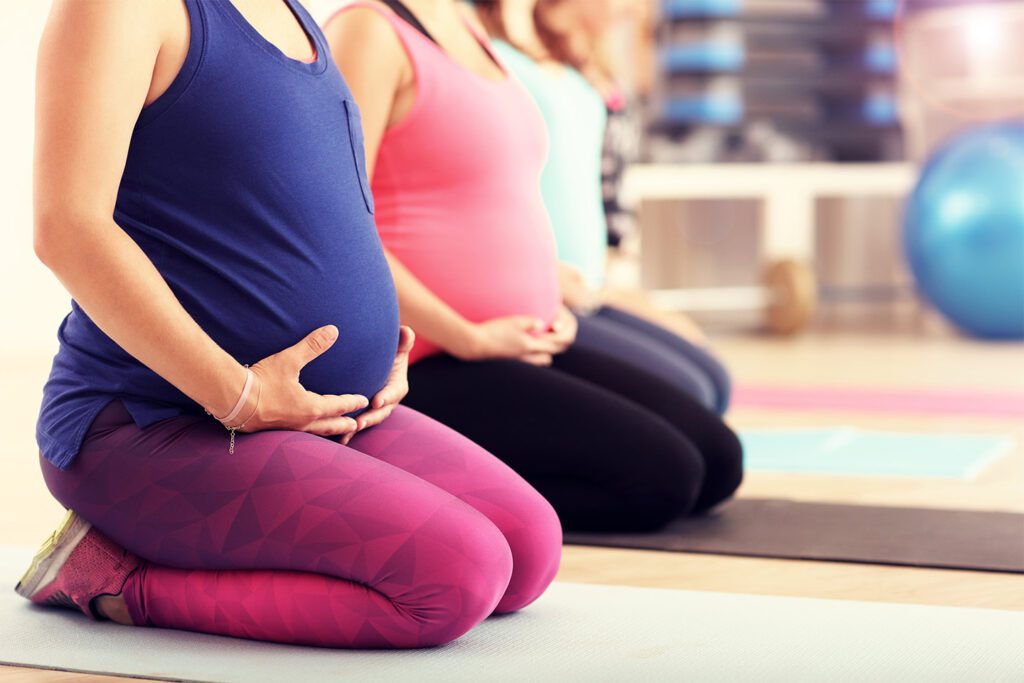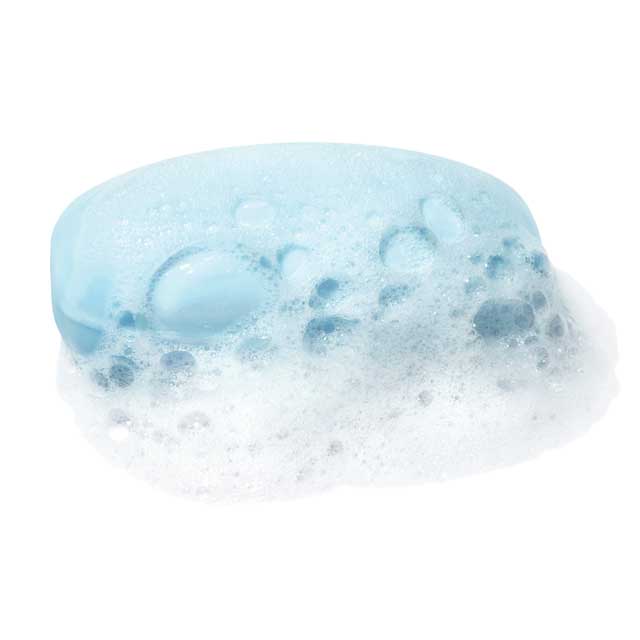For Her
Working Out While Pregnant: Benefits & Playing it Safe
According to The Mayo Clinic, exercise is essential during pregnancy unless you’re experiencing serious complications. You might feel the urge to kick up your feet, but hopping off the couch and getting your heart racing while pregnant can have some serious benefits, including:
- Easing or preventing back pain and other discomfort
- Boosting your mood and energy levels
- Helping you sleep better
- Preventing excess weight gain
- Increasing stamina and muscle strength
But how can you play it safe during your pregnancy?

Get the OK from your healthcare provider before you begin a regimen. Certain issues could cause your health care provider to advise against exercise. Once you’ve been given the green light, stick to the recommended amount of 30 minutes of moderate exercise most days of the week.
The Mayo Clinic suggests walking, swimming, low-impact aerobics, or cycling on a stationary bike. And try not to overextend yourself. A good gauge is to make sure you’re able to hold a conversation while you’re exercising – if you can’t you’re likely working out too hard. Don’t forget to drink plenty of fluids and to warm up and cool down.
Bra Buying: Are you choosing the right one for you?
You might think you know your bra size – but do you really? Hanes lays out a few simple steps to ensure you find your perfect-fit bra. First, grab a flexible tape measure and a comfortable, non-padded bra. Don’t wear one that is bulky or minimizing. Put your bra on, but forego a shirt. Then, wrap the tape measure around your chest where the bra’s band is, holding the tape snugly. Add 5 inches to the measurement number, but go up one if the number you end up with isn’t even.
Not sure if that number is accurate? Double check yourself by wrapping the tape around your chest, above your bust and just below your underarms. This should be the number you ended up with for your band size.
Finally, measure for your cup size. To do this, gently wrap the tape around the fullest part of your bust and take a breath in and out. Round to the nearest whole number and subtract your band size from your bust size. The difference between the two numbers will determine your cup size.
For Him
A Beard of Bacteria: It’s not as clean as you might think.


The equivalent of a woman’s brand-new designer bag, these days beards are one of the most in-vogue accessories a man can have. You may have seen the studies that reveal women’s purses are crawling with germs and bacteria. Now it appears women aren’t the only ones with an icky accessory.
Swabs from men’s beards gathered from an ABC News affiliate revealed levels of bacteria equal to that of a toilet. Fecal matter-like bacteria in a place so near the eyes, nose, and mouth is never a good thing, but there is a simple solution. It’s relatively easy to keep your beard clean and bacteria-free. Just follow a few steps outlined below.
- Give your beard a good soapy scrub.
- Wash your hands and face frequently.
- Try not to touch your face, as this is the main way germs are spread to the beard.
Bar Soap vs. Liquid Soap: What’s the smartest way to scrub?
Are you on team liquid soap or bar? It might seem like they’re one in the same, but did you know that germs can grow on soap bars and can easily be spread from person to person? Plus, they’re a conduit for skin infections, so if you live in a multi-person household, liquid soap is definitely the way to go to ensure less germs are bred and spread. Another reason to rally for the liquid type? Many versions contain an added moisturizer, so your skin won’t dry out as quickly as it might from a bar. One note worth mentioning when soap shopping is that antibacterial soap isn’t necessary for most people. In fact, it’s no more effective than plain soap when it comes to killing germs on your hands and body. Antibacterial soap has to be left on the skin for up to two minutes before it has any effect on bacteria that might be on your skin. Next time your soap supply runs out, go buy a simple liquid soap and lather up!


For the Whole Family
Pick the Perfect Pillow: What cushy prop is right for you?
Too hard, too soft, too lumpy, too flat. It’s a common dilemma in the quest for the right pillow, but it’s important to find the correct type for you. According to the National Sleep Foundation, an improper pillow could be the cause of anything from headaches to neck pain to arm numbness. The foundation claims that to find the perfect pillow, you first have to determine what type of sleeper you are.
Back Sleeper: Back sleepers benefit from thinner pillows with extra thickness in the bottom third to help cradle the neck. Consider memory foam or a water pillow, as these offer overall support.
Stomach Sleeper: For stomach sleepers, pillows aren’t even a requirement. If you do opt for a pillow, you can use the thinnest type you can find. Try sleeping on your side instead to relieve pressure on your lower back.
Side Sleeper: Side sleepers should use a firm pillow with extra-wide gussets (rectangular panels along all four sides for increased thickness). This type will help bridge the gap between your ear and shoulder.
Soak Up the Sun: The Importance of Getting Vitamin D
While you can find foods that contain vitamin D, it’s difficult for your body to get the amount it needs from food alone. That’s why vitamin D supplements and exposure to sunlight are crucial. But don’t try to overdo it! You should always wear sunscreen when you’ll be outdoors, but it only takes about half the time it takes for your skin to burn to get the vitamin D exposure you need in a day. Be sure to take care of your skin on your quest for vitamin D.
Meeting your vitamin D requirements isn’t always easy, so what makes it so important? Two things make vitamin D a crucial nutrient. One, it helps to absorb calcium, leading to strong bones.


And two, it blocks the release of parathyroid hormone, which reabsorbs bone tissue, making bones thin and brittle. In addition, health problems can arise if you don’t get enough vitamin D. Osteomalacia in adults and rickets in children can occur without vitamin D exposure, both of which lead to brittle, painful bones and muscle pain and weakness.
For Mom
Blurred Lines: Does your child need glasses?
Because many eye diseases can be detected and treated early, regular eye exams are important for kids. In between eye checks, stay vigilant when it comes to your child’s eyesight, so that you can spot eye problems that may arise. According to Nemours Kids Health, several signs could indicate a vision problem. They include:
- constant eye rubbing
- extreme light sensitivity
- poor focusing or visual tracking
- abnormal alignment or movement of the eyes (after 6 months of age)
- chronic redness or tearing of the eyes
- a white pupil instead of black
- being unable to see objects at a distance
- squinting
- difficulty reading
- sitting too close to the TV


If it’s determined that your child needs glasses, there are a few things to keep in mind. Plastic is best for children under the age of two, and polycarbonate lenses are tough, shatterproof, and lightweight, making them a great choice for kids. Make picking out frames a fun activity for your child. And remember, if caught early, eye problems can often be corrected.
Screen Time: How much is too much?
These days, it’s hard to find a child who doesn’t have access to a tablet, video game, cell phone, or television. According to the U.S. National Library of Medicine, most American children spend about three hours a day watching TV, and up to five to seven hours of screen time in total. Most screen time requires little to no energy use, making it a highly sedentary activity. Along with that, too much screen time can:
- make it hard for your child to sleep at night
- raise your child’s risk of attention problems, anxiety, and depression
- increase your child’s risk of gaining too much weight
It’s recommended that children under age 2 have no screen time, and that screen time is limited to one to two hours each day for children over the age of 2. Try removing the TV or computer from your child’s bedroom to decrease screen time, and don’t allow your child to eat while watching TV or using a screened device. Other helpful tips for reducing screen time include having a set TV schedule and turning the TV off when those shows end, and challenging your family to see how long each person can go with no screen time.

